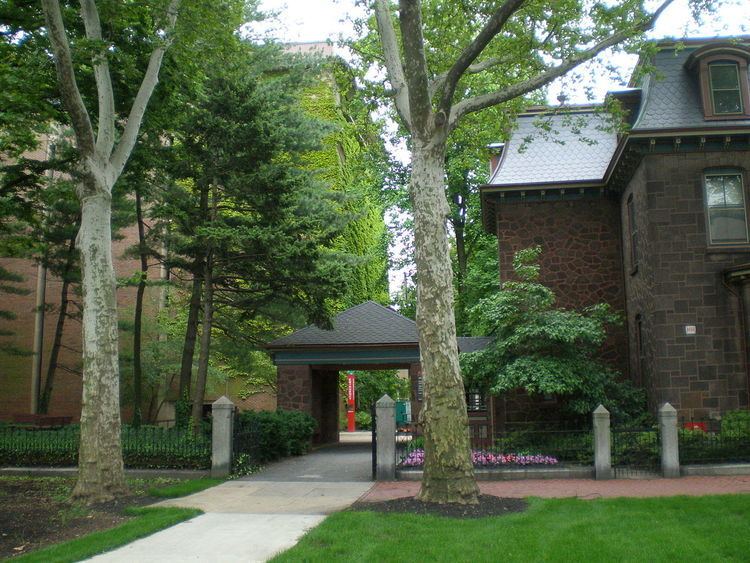Parent school Rutgers University School type Public Phone +1 856-225-6375 | Established 1926 Total enrollment 789 (2010) Dean Rayman Solomon | |
 | ||
Motto Sol iustitiae et occidentem illustra (Sun of righteousness, shine upon the West also) Location Camden, New Jersey, United States Faculty 179 (unified Rutgers Law School) Address 217 N 5th St, Camden, NJ 08102, USA Hours Open today · 9AM–8PMSaturday9AM–8PMSundayClosedMonday7:30AM–12AMTuesday7:30AM–12AMWednesday7:30AM–12AMThursday7:30AM–12AMFriday7:30AM–10PMSuggest an edit Notable alumni James Florio, William T Cahill, Scott Garrett, Stephen Orlofsky, Legrome D Davis Similar Rutgers School of Law – Ne, Rutgers University, New York Law School, Rutgers University–Newark, Rutgers University–New Brunswick | ||
Formerly the Rutgers School of Law—Camden, the Camden campus of Rutgers Law School is located in in Camden, New Jersey. It and the Newark campus are the two campuses of the unified Rutgers Law School. In 2015, former Rutgers Law School–Camden officially merged with the former Rutgers School of Law–Newark, thereby creating the unified Rutgers Law School with two campuses.
Contents
- History
- Academic Program
- Clinics
- Externships
- Pro bono
- Centers and institutes
- Clerkships
- Employment
- Costs
- Judicial
- Legislative and executive
- Public sector
- References
U.S. News & World Report, in its 2018 rankings of Best Graduate Schools, ranked Rutgers Law School 62nd among 197 law schools fully accredited by the American Bar Association.
History
Founded in 1926 as "South Jersey Law School" by Collingswood mayor and businessperson Arthur E. Armitage, Sr. and an interested group of citizens, the law school merged with Rutgers University in 1950. The school is approved by the American Bar Association and is a member of the Association of American Law Schools. Students are graduates of 140 different colleges and universities. The school consistently ranks in the second tier of law schools in the nation and is currently ranked 91st among the Top 100 law schools in the 2013 edition of U.S. News & World Report's "Best Graduate Schools", but has ranked higher in previous years (i.e. 65th in 2006, 2007, 2009). The school's legal writing program is ranked 11th in the nation by U.S. News and has been consistently ranked among the top legal writing programs in the past decade. Its part-time program was ranked 9th in the nation for 2013.
In January 2009, then-Rutgers Law School–Camden completed construction of a new facility, designed by Ayers Saint Gross. The cost of the 53,000 square feet (4,900 m2) addition to the existing law school was approximately $24 million and added classrooms, office space, and the "Archer & Greiner Moot Courtroom." The project included renovations in the existing facility, expanded social areas, and clinical space. A two-story, glass bridge spans Fifth Street in Camden and is visible to travelers on the Benjamin Franklin Bridge.
Academic Program
A unified admissions process accompanies the merger of the Newark and Camden schools into a single Rutgers Law School. Starting with the incoming class of 2016, application materials and requirements are identical. Applicants indicate, after admission, which of the two cities — Camden or Newark — will be their preferred home base for legal studies.
Rutgers Law School on the Camden Campus offers a legal education designed to teach the rules of law and their application; to demonstrate how lawyers analyze legal issues and express arguments and conclusions; to inculcate the skills of the counselor, advocate, and decision maker; and to explore the ethical and moral dimensions of law practice and professional conduct.
The law school offers a three-year course of study for full-time students and a four-year, part-time program leading to the awarding of the Juris Doctor degree. According to the 2011 edition of the U.S. News & World Report, 573 students were enrolled full-time and 216 students were enrolled part-time.
Camden has two unique features uncharacteristic of other schools of similar repute. First, the number of students accepting clerkships as their first job out of law school typically exceeds or equals the number of students accepting positions in private practice. Second, the number of part-time students enrolled in the "part-time day" program exceeds the number of students in the part-time evening program. Most law schools typically only offer part-time evening programs, giving students the option to transfer to the day program after completing the required curriculum and meeting a set GPA.
Clinics
Rutgers School of Law - Camden has five clinics:
Externships
Rutgers School of Law–Camden has two externships:
Pro bono
Rutgers School of Law–Camden currently has thirteen pro bono projects
Centers and institutes
Clerkships
Camden places an unusually large number of graduates in judicial clerkships, typically 30-35% of the class. The vast majority of these clerkships are with state and local courts, while fewer than 5% of graduates are placed in federal clerkships.
Employment
According to Rutgers School of Law–Camden's official 2013 ABA-required disclosures, 63.8% of the Class of 2013 obtained full-time, long-term, JD-required employment nine months after graduation. Rutgers School of Law–Camden's Law School Transparency under-employment score is 25.4%, indicating the percentage of the Class of 2013 unemployed, pursuing an additional degree, or working in a non-professional, short-term, or part-time job nine months after graduation, 20.7% of which were unemployed. 75% of students graduating from Rutgers School of Law–Camden earn $60,000 or less 9 months after graduation, and the mean salary is $58,145.
Costs
Tuition and fees at Rutgers law School for the 2016-2017 academic year is $27,269 (full-time, in-state) and $39,683 (full-time, out-of-state).
